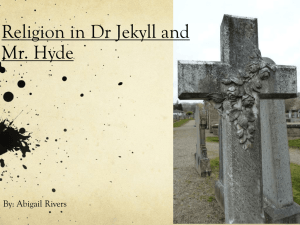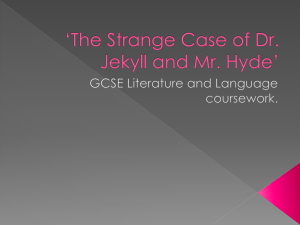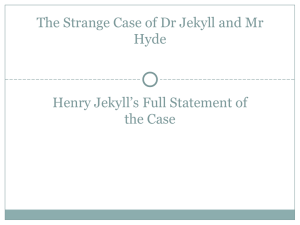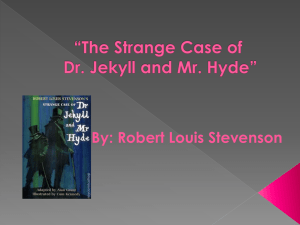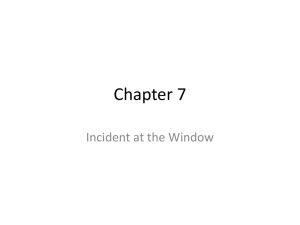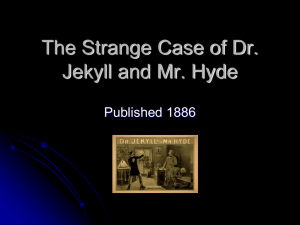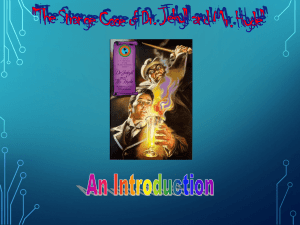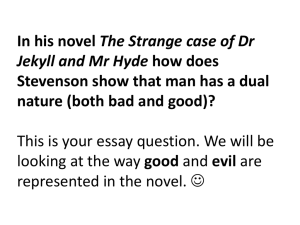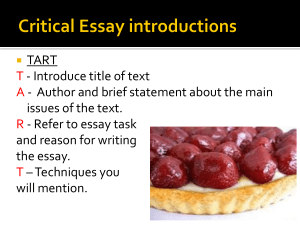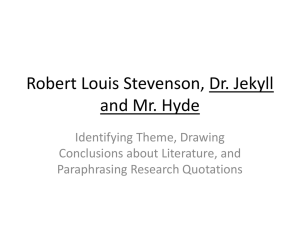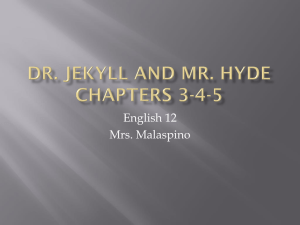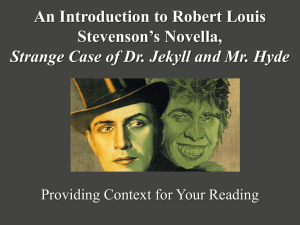ENG4U1 Novel Study Unit: Strange Case of Dr Jekyll and Mr Hyde
advertisement
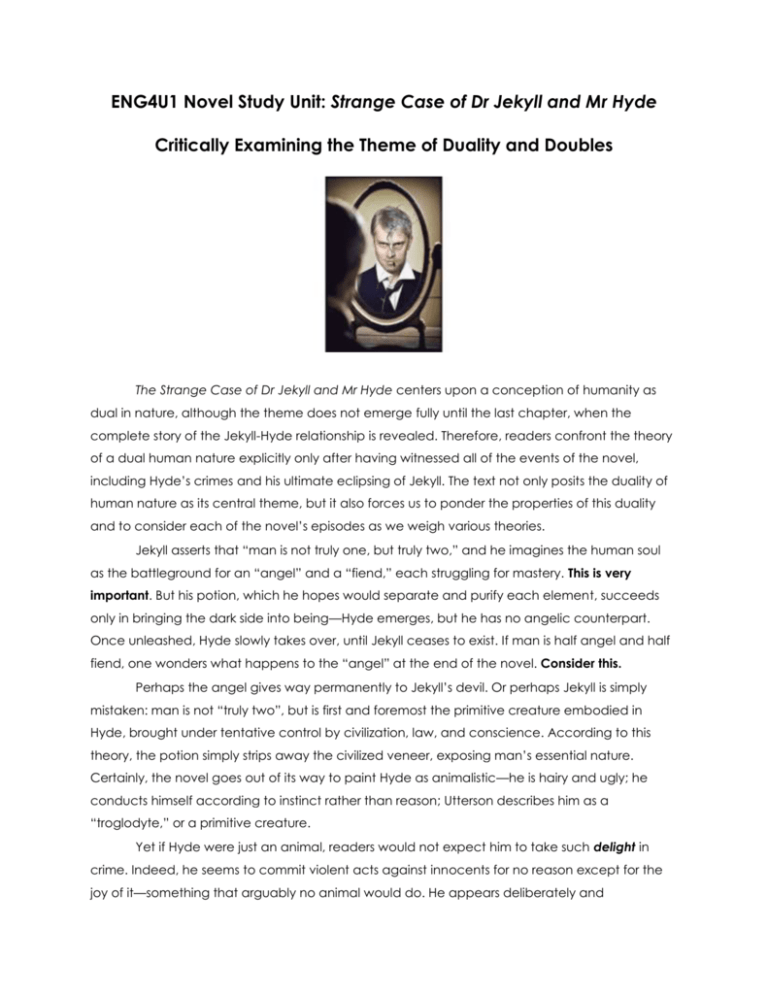
ENG4U1 Novel Study Unit: Strange Case of Dr Jekyll and Mr Hyde Critically Examining the Theme of Duality and Doubles The Strange Case of Dr Jekyll and Mr Hyde centers upon a conception of humanity as dual in nature, although the theme does not emerge fully until the last chapter, when the complete story of the Jekyll-Hyde relationship is revealed. Therefore, readers confront the theory of a dual human nature explicitly only after having witnessed all of the events of the novel, including Hyde’s crimes and his ultimate eclipsing of Jekyll. The text not only posits the duality of human nature as its central theme, but it also forces us to ponder the properties of this duality and to consider each of the novel’s episodes as we weigh various theories. Jekyll asserts that “man is not truly one, but truly two,” and he imagines the human soul as the battleground for an “angel” and a “fiend,” each struggling for mastery. This is very important. But his potion, which he hopes would separate and purify each element, succeeds only in bringing the dark side into being—Hyde emerges, but he has no angelic counterpart. Once unleashed, Hyde slowly takes over, until Jekyll ceases to exist. If man is half angel and half fiend, one wonders what happens to the “angel” at the end of the novel. Consider this. Perhaps the angel gives way permanently to Jekyll’s devil. Or perhaps Jekyll is simply mistaken: man is not “truly two”, but is first and foremost the primitive creature embodied in Hyde, brought under tentative control by civilization, law, and conscience. According to this theory, the potion simply strips away the civilized veneer, exposing man’s essential nature. Certainly, the novel goes out of its way to paint Hyde as animalistic—he is hairy and ugly; he conducts himself according to instinct rather than reason; Utterson describes him as a “troglodyte,” or a primitive creature. Yet if Hyde were just an animal, readers would not expect him to take such delight in crime. Indeed, he seems to commit violent acts against innocents for no reason except for the joy of it—something that arguably no animal would do. He appears deliberately and happily immoral rather than amoral; he knows the moral law and basks in his breach of it. For an animalistic creature, furthermore, Hyde seems oddly at home in the urban landscape. Consequently, all of these observations imply that perhaps civilization, too, has its dark side. Ultimately, while Stevenson clearly asserts human nature as possessing two aspects, he leaves open the question of what these aspects constitute. Perhaps they consist of evil and virtue; perhaps they represent one’s inner animal and the veneer that civilization has imposed upon all of us. Stevenson enhances the richness of the novel by leaving us to look within ourselves to find the answers. So…let’s look! Your Task: Now that you have finished reading the novella, consider how the theme of duality and doubles is developed, and ultimately revealed, in the text. Using the entire novella as your reference, consider the use of this theme in the text in response to the broad thinking questions provided below. Answer the following thinking questions in complete sentences on a separate sheet of lined paper. Include direct textual references and quotations to support your observations and assertions. Thinking Questions: 1. How is the ultimate significance of this theme foreshadowed throughout the text? Include 3 direct examples of foreshadowing from the novella, and what is being foreshadowed by each example (explain thoughtfully). 2. What do you think is Stevenson’s ultimate message in the novella regarding the battle between good and evil, as well as the dark side of human nature? Include a minimum of 2 direct examples from the novella as proof. 3. Explore the role of the “human monster” in the novella by considering the following: Horror and gangster films and fiction often explore the dual nature of a criminal by showing an evil person performing an act of kindness. Does Stevenson include these “positive” elements in his characterization of Edward Hyde? Does the development of Hyde’s/Jekyll’s character ultimately make them more sympathetic or more sinister in the text? Explain using a minimum of 2 direct examples from the novella as proof. 4. In your educated opinion, what happens to the “angel” at the end of the novel? Explain insightfully.
